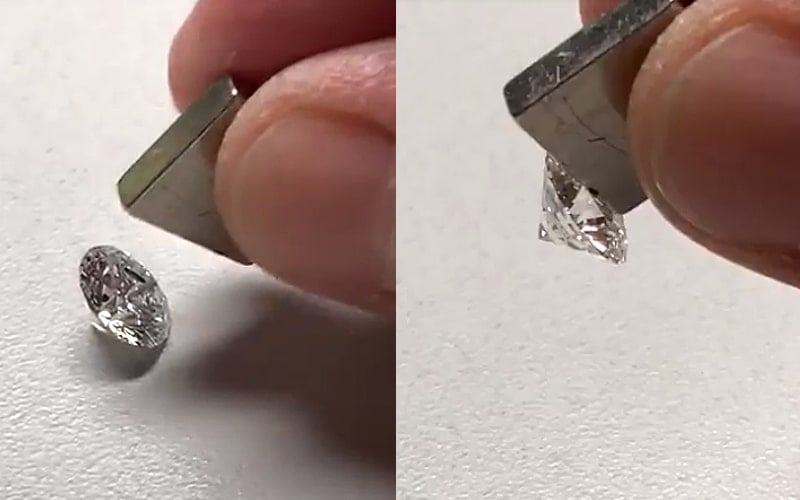Table of Contents
What Are Inclusions?
Inclusions are natural imperfections or foreign materials that occur within a diamond. They are often referred to as “blemishes” or “flaws” and can affect the diamond’s clarity, appearance, and overall value. Inclusions in diamonds can take various forms, including tiny crystals, gas bubbles, or mineral fragments. These imperfections are evaluated based on their type, size, location, and visibility, which collectively influence the diamond’s clarity grade.
Inclusions in Lab-Grown Diamonds
inclusions in lab grown diamonds environments using advanced technology that replicates natural diamond formation. Despite this controlled environment, inclusions can still occur in lab-grown diamonds. These inclusions can be similar to those found in natural diamonds and may include:
- Gas Bubbles: Tiny pockets of gas trapped within the diamond during the growth process.
- Mineral Crystals: Small particles of minerals or other materials that become embedded in the diamond.
- Feathers: Internal fractures or cracks that can resemble feathers.
- Pinpoints: Extremely small inclusions that may appear as tiny dots under magnification.
How Inclusions Affect Lab-Grown Diamonds
Inclusions can impact a lab-grown diamond’s clarity, brilliance, and value. Here’s how:
- Clarity: Inclusions can affect the clarity grade of a diamond. Diamonds with fewer and less visible inclusions typically have higher clarity grades and are more valuable. Conversely, diamonds with numerous or prominent inclusions may have lower clarity grades.
- Brilliance: Inclusions can interfere with the diamond’s ability to reflect light, potentially diminishing its brilliance and sparkle. While lab-grown diamonds are often of high quality, inclusions can still affect their visual appeal.
- Value: The presence of inclusions can influence the diamond’s market value. Diamonds with high clarity and minimal inclusions generally command higher prices. Buyers should consider the trade-off between clarity and cost when selecting a lab-grown diamond.
Evaluating Inclusions in Lab-Grown Diamonds
When evaluating lab-grown diamonds, it’s essential to understand how inclusions are assessed and what to look for:
- Certification: Reputable gemological institutions, such as the Gemological Institute of America (GIA), provide certification for diamonds, including lab-grown ones. Certification documents detail the diamond’s clarity grade and describe any inclusions present. Always request a certificate to verify the diamond’s characteristics.
- Magnification: Use a jeweler’s loupe or microscope to examine the diamond for inclusions. These tools allow you to see details that are not visible to the naked eye. Assessing the size, type, and location of inclusions can help you make an informed decision.
- Professional Evaluation: Consulting with a professional gemologist can provide valuable insights into the diamond’s clarity and the impact of any inclusions. Gemologists can offer expert advice on the significance of inclusions and their effect on the diamond’s value and appearance.
Managing Inclusions in Lab-Grown Diamonds
While inclusions are a natural part of diamond formation, there are ways to manage their impact:
- Selection: When purchasing a lab-grown diamond, choose one with minimal or less noticeable inclusions. lab grown diamonds with high clarity grades are generally more desirable and can offer better value.
- Customization: Some buyers opt for custom settings or designs that can conceal or minimize the visibility of inclusions. For example, choosing a setting with prongs or a design that hides certain areas can help reduce the prominence of inclusions.
- Regular Maintenance: Regular cleaning and maintenance can help keep the diamond’s appearance pristine. Ensure that the diamond is properly cared for to maintain its clarity and brilliance.
The Role of Technology in Reducing Inclusions
Advancements in technology have improved the quality of lab-grown diamonds, including efforts to reduce the occurrence of inclusions. The two primary methods used to create lab-grown diamonds—High Pressure High Temperature (HPHT) and Chemical Vapor Deposition (CVD)—are continually refined to enhance diamond quality. These advancements aim to produce diamonds with fewer inclusions and greater clarity, contributing to their overall appeal and value.
Conclusion
Inclusions are an inherent aspect of both natural and lab-grown diamonds, affecting their clarity, brilliance, and value. Understanding the types of inclusions and their impact on lab-grown diamonds is crucial for making informed purchasing decisions. By evaluating certifications, examining inclusions with magnification, and seeking professional advice, buyers can find lab-grown diamonds that meet their preferences and expectations. With continued technological advancements and careful selection, lab-grown diamonds can offer exceptional beauty and value while minimizing the impact of inclusions.
